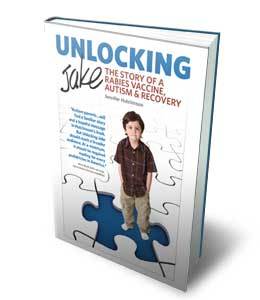
 From nurses, lab techs, and students, to clerical, security, and volunteer personnel, you may be given an ultimatum anytime now: get a flu vaccine or lose your job. A new federal working group, Healthcare-Associated Infections (HAIs) Increasing Influenza Vaccination Coverage Among Health Care Personnel (“the group”), has recommended that hospitals around the country implement a program to increase flu immunization rates to 90 percent by 2020. [1]
From nurses, lab techs, and students, to clerical, security, and volunteer personnel, you may be given an ultimatum anytime now: get a flu vaccine or lose your job. A new federal working group, Healthcare-Associated Infections (HAIs) Increasing Influenza Vaccination Coverage Among Health Care Personnel (“the group”), has recommended that hospitals around the country implement a program to increase flu immunization rates to 90 percent by 2020. [1]
Before exploring this new mandate—and your options—let’s ask some questions about the flu vaccine.
HOW EFFECTIVE IS IT?
According to an article published in The Lancet earlier this year, the vaccine prevents influenza in approximately 60 of every 100 people. [2] Michael Osterholm, lead author of the new report and director of the University of Minnesota’s Center for Infectious Disease Research & Policy, says “it’s not nearly the vaccine that we need for the future.” [3]
The meta-analysis of 5,707 articles published from 1967 to 2011 turned up 31 “eligible” studies. That means 5,676 studies were NOT eligible. Why? Were they not true randomized controlled trials? And/or did they show that the flu vaccine wasn’t effective?
Read the next two sentences carefully. Approximately 60 percent of doctors and nurses get a flu shot. Among other healthcare personnel, the rate is less than 50 percent. [4] Why? These are educated people who have devoted their lives to helping the sick and injured. Do they know something we don’t know?
Here’s another red flag. The University of Pittsburgh and Sanofi Pasteur are collaborating to create a universal flu vaccine that protects against all strains of influenza. This new shot is the result of a discovery of how the immune system reacts to the flu virus and generates antibodies. [5]
Dr. Beatrice Fontoura (UT Southwestern) explains that the reason so many people who receive the current shot still get the flu is because the virus can mutate, making the vaccine ineffective. “What we are doing is something different,” she says. “We are actually stimulating our own response which is already there—boost it—to fight an infection.” [6]
Hmmm … Sounds like an admission that the current shot isn’t working.

BUT WHAT ABOUT THE STATISTICS?
Back to the meta-analysis. Less than 3 percent of 13,000+ adults who didn’t get the flu shot came down with the flu. That means 97 percent did NOT get the flu. Of the vaccinated adults, slightly more than 1 percent got the flu. That means 99 percent did NOT get the flu.
What do these figures tell us? The flu shot works in approximately 1.5 of every 100 adults. I could explain how the numbers have been “massaged,” but I suggest that you read the article written by Mike Adams (Health Ranger, Natural News).
Aside from making the math crystal clear, he points out numerous problems with the study and states the obvious: “Even when pro-vaccine medical journals publish pro-vaccine studies paid for by pro-vaccine non-profit groups, the very best data they can manage to contort into existence only shows flu vaccines preventing influenza in 1.5 out of 100 adults.”[7]
A Cochrane Collaboration report included 40 clinical trial studies of more than 70,000 people. When the vaccine matched the flu strain, 4 percent who weren’t vaccinated got the flu. One percent of vaccinated people got it. That’s a difference of 3 percent. When the vaccine didn’t match the strain, 2 percent of unvaccinated people got the flu, and 1 percent didn’t, for a difference of 1 percent.
These numbers tell us a lot. But there’s more. Fifteen of the trials were funded by vaccine companies. “The review showed that reliable evidence on influenza vaccines is thin but there is evidence of widespread manipulation of conclusions and spurious notoriety of the studies.” [8]
ISN’T THE FLU DEADLY?
We are constantly bombarded by media announcements that each year’s flu season is going to be the worst yet. Remember the 2009 H1N1 scare? Out of 308 million Americans, the CDC estimated that approximately 12,000 people died from that “pandemic.”
However, the CDC has since said that the U.S. has “3,000 to 49,000 influenza-associated deaths each year.” [9] If you take away the people who die from complications, the number of annual flu mortalities is probably around 1,000. [10]
IS THE SHOT SAFE?
The Department of Health & Human Services maintains that ensuring “an adequate, safe, and effective supply of influenza vaccine each year is one of FDA’s and CDC’s highest priorities.” [11] I’m assuming by “adequate,” they mean enough to go around. I doubt that a shortage of flu vaccine is an issue, but warning the public every fall to hurry and get their shots for the upcoming “pandemic” before the supply runs out is a clever scare tactic.
Safe? Where are the studies? Maybe in the 5,676 ineligible batch. Effective? In the batch of 31 eligible studies.
The number of claims filed with the federal Vaccine Injury Compensation Program (VICP) in 2010 was almost three times the number filed from 2001 to 2007. Most of the claims were the result of injury caused by the flu vaccine in adults. [12]
In a letter to the National Vaccine Program Office, Barbara Loe Fisher, National Vaccine Information Center (NVIC), says: “The fact that influenza vaccine injury reports and compensation claims are increasing should be of great concern to NVAC [National Vaccine Advisory Committee]….” [13]
WHAT IS THE NEW MANDATE?
Starting July 1, 2012, and continuing through July 1, 2013, health facilities are required to develop programs to increase influenza vaccine rates. “The group” I mentioned earlier has issued guidelines explaining what type of facilities and healthcare workers should be covered under the mandate. I found the specifics complicated but, in essence, the new mandate leaves some decisions up to the individual facility. [14]
Hospitals are required to set incremental goals (annual) and track vaccination rates on a form that includes the number of healthcare workers who are vaccinated, those who refused the vaccine, and those who have medical or religious reasons for declining.
The only acceptable medical contraindications recommended are “a severe allergic reaction to eggs or other vaccine component(s) or a history of Guillain-Barré Syndrome within 6 weeks after a previous influenza vaccination.” [15] Effective January 2013, the CDC’s National Healthcare Safety Network (NHSN) will monitor facilities’ vaccine coverage through an online surveillance system. [16]
Facilities implementing the mandatory vaccine will need to decide whether to offer or mandate the flu vaccine, who is required to be vaccinated (employees with patient contact, medical personnel, volunteers, students, vendors), what type of exemptions they will accept (if any) and whether they will require proof (statement from doctor, a form signed by the employee) and signed declination forms, what they will do to employees who refuse (reassign them so they’re not in close contact with patients, require them to wear masks, fire them), and whether vaccination is a condition of initial employment. [17]
For laws in your state, see the CDC’s State Immunization Laws for Healthcare Workers and Patients website. [18] Keep in mind that the law could change at any time.
WHAT ARE PEOPLE SAYING ABOUT THE MANDATE?
OSHA (Occupational Safety and Health Administration) disagrees with the mandate on the grounds that it’s not effective enough. The flu vaccine is “no magic bullet.” The strains, and therefore the effectiveness of the shot, vary from year to year. In years when there is no match, “the vaccine may provide no protection at all.” [19] The shot should be offered to employees, along with the benefits and risks, and they should be allowed to sign a declination and not be fired if they refuse the vaccine. [20]
NBGH (National Business Group on Health) is for the mandate as a condition of employment unless workers have a medical contraindication or religious objection and, in that case, they should wear masks. Any other reason is grounds for being fired. [21]
NVIC (National Vaccine Information Center) believes one size doesn’t fit all, and mandates are unconstitutional. “It is unfair, irresponsible, and unethical for employers to force healthcare workers to choose between their health, their deeply held spiritual or conscientious beliefs, or their job.” Mandates also don’t take into consideration the fact that flu vaccines come with risks. [22]
NVAC (National Vaccine Advisory Committee) believes facilities should consider requiring the flu shot if they don’t have a 90 percent vaccination rate. “Other recommendations focus on education on preventing flu transmission, incorporating flu vaccination programs into occupational health programs, and improving ways to track flu vaccination rates among healthcare workers.” [23]
Meryl Nass, M.D., Mount Desert Island Hospital, Bar Harbor, ME, clearly states that “no one has shown that vaccinating workers leads to healthier patients or fewer deaths, and the lack of convincing evidence undercuts the scientific and legal basis for mandating healthcare worker vaccinations.” [24]
NNU (National Nurses United) believes that healthcare workers should know the risks and benefits and be taught how to protect patients. Employees should be allowed religious or health exemptions. The union doesn’t agree with forcing healthcare workers to wear masks, because there’s a lack of science showing effectiveness, and it’s a violation of privacy. [25]
Arthur Caplan, Ph.D., and director of the University of Pennsylvania’s Center for Bioethics, is in favor of mandatory flu vaccines as a condition of employment. He says healthcare workers need to understand the “ethical” reasons for mandatory vaccines, including protecting their patients, their promise to “do no harm,” and setting an example for others. [26]
Association of American Physicians and Surgeons (AAPS) objects to the mandate. Reasons include a lack of evidence that they work and are safe and the belief in Americans’ rights to make their own medical decisions. [27]
WHAT ARE MY OPTIONS?
If you’ve been told to get a flu shot or find another job, there are several things you can do.
Find out what exemptions are acceptable. You may need a letter from your doctor for a medical exemption. For a religious exemption, some employers ask for a statement of your belief or proof of church membership. According to attorney Alan Phillips, if you don’t follow the rule to the letter, you could risk losing the exemption. [28]
Contact the Office of Medical and Scientific Justice (OMSJ). OMSJ is a non-profit, private investigation agency that, among other things, helps people facing administrative action for refusal of a vaccine. [29]
Talk to a lawyer. They can explain your rights to you—and your employer. See http://thinktwice.com/lawyers.htm, www.vaccineexemption.org, and www.vaccinerights.com for a lawyer experienced in vaccine rights.
Remember that you do have rights. The Civil Rights Act of 1964 says “employers must reasonably accommodate their employees’ religious beliefs unless it would cause an undue hardship for the employers.” [30]
There are fighters out there. For instance, early this year, the Washington State Nurses Association won a battle on behalf of 600+ RNs at Seattle’s Virginia Mason Medical Center. The U.S. District Court ruled that the hospital could not force nurses to get the flu vaccine. [31]
WHAT’S THE TRUTH?
When you dissect the “science,” you’ll quickly discover that the flu vaccine is not only extremely ineffective, but its necessity is overrated, and studies of safety are lacking. Mandating the vaccine for healthcare workers with the threat of being fired upon refusal is a violation of human rights and, frankly, ludicrous. How about using some good, old-fashioned hygiene, like washing your hands, using disinfectants, and staying home when you’re sick?
The flu vaccine is, at best, a crap shoot. Every year health officials get together to choose which of the 200+ strains of flu to include in the vaccine. They guess, and if their guess is wrong, the vaccine is worthless. “Preparing for the influenza season each year is a time-critical, highly orchestrated, collaborative effort of the global health community, including disease surveillance authorities in many countries, the WHO, NIH, FDA, CDC, and vaccine manufacturers,” says the U.S. Department of Health & Human Services. [32]
All this for a vaccine that works in 1.5 percent of adults. What a colossal waste of money, time, and energy.
[contentbox headline=”References” type=”normal”]
1. www.hhs.gov/ash/initiatives/hai/hcpflu.html
2. www.thelancet.com/journals/laninf/article/PIIS1473-3099%2811%2970295-X/fulltext#article_upsell
3. http://vitals.nbcnews.com/_news/2011/10/25/8484876-flu-shot-not-as-effective-as-thought…
4. www.hhs.gov/ash/initiatives/hai/hcpflu.html
5. www.nih.gov/news/health/aug2012/niaid-29.htm
6. http://dfw.cbslocal.com/2011/11/04/north-texas-researchers-creating-u…
7. www.naturalnews.com/033998_influenza_vaccines_effectiveness.html
8. http://onlinelibrary.wiley.com/doi/10.1002/14651858.CD001269.pub4…
9. www.nvic.org/PDFs/NVAC/NVPO-Flu-Vaccine-Public-Comment-docx.aspx
10. http://liamscheff.com/2011/10/flu-vaccines-the-mainstream-admits-we-w…
11. www.hhs.gov/ash/initiatives/hai/hcpflu.html
12. www.hrsa.gov/vaccinecompensation/accvminutes030311.pdf
13. www.nvic.org/PDFs/NVAC/NVPO-Flu-Vaccine-Public-Comment-docx.aspx
14. www.jointcommission.org/assets/1/18/R3_Report_Issue_3_5_18_12_final.pdf
15. www.flusupplynews.com/Navigation/Resources/Newsroom/Newsroom.aspx
16. www.hhs.gov/ash/initiatives/hai/hcpflu.html
17. www.ober.com/publications/1606-what-every-hospital-should…
18. www2a.cdc.gov/nip/statevaccapp/statevaccsapp/default.asp
19. http://conferences.und.edu/immunization/documents/Hansen-Update…
20. www.weknownext.com/trends/is-requiring-flu-vaccinations-worth-the-risk
21. www.weknownext.com/trends/is-requiring-flu-vaccinations-worth-the-risk
22. www.nvic.org/PDFs/NVAC/NVPO-Flu-Vaccine-Public-Comment-docx.aspx
23. www.weknownext.com/trends/is-requiring-flu-vaccinations-worth-the-risk
24. http://healthimpactnews.com/2011/mandating-flu-vaccine-for-health-care-workers/
25. www.weknownext.com/trends/is-requiring-flu-vaccinations-worth-the-risk
26. www.thelancet.com/journals/lancet/article/PIIS0140-6736%2811%2961156-2/fulltext
27. www.aapsonline.org/index.php/site/article/colorado_influenza_letter
28. www.naturalnews.com/033648_healthcare_workers_vaccines.html
29. www.omsj.org
30. www.naturalnews.com/033648_healthcare_workers_vaccines.html
31. www.weknownext.com/trends/is-requiring-flu-vaccinations-worth-the-risk
[/contentbox]